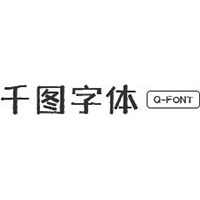Rhyme & Reason – A classic book and four funky dust jackets


Photo: Ferdinand Ulrich. © Verlag Hermann Schmidt Mainz. License: All Rights Reserved.
In his first book designer and author Erik Spiekermann introduces the so-called First Spiekermann Dictum in a chapter about line spacing: "Where two consecutive lines are closely spaced, and where there is but one descender and one ascender in each line, then in 99 per cent of cases the descender and the ascender will meet and overlap." While many designer may in fact have encountered this challenge and have therefore seen the dictum to be true, the author further states: "There is a rule saying: descender and ascenders must never touch. There is an exeption to this rule: touching is allowed if it looks better." These centered lines are set in Berthold'sLoType, resurrected by Spiekermann for photocomposition in 1980. A little label, stamped in the corner, is left for remarks – the small type in it is set inBerliner Grotesk, another revival by Spiekermann (1979).
Ursache & Wirkung: ein typografischer Roman was Erik Spiekermann's debut as a book author. First published in 1982 by the Context GmbH, it was recognized as one of Germany's finest books by the Stiftung Buchkunst that year. Furthermore it received a gold price at the Internationaler Druckschriften-Wettbewerb and another award by the Designers & Art Directors in 1983. In 1986 a second edition was issued by H. Berthold AG and only a year later – with the same publisher – Rhyme & reason: a typographic novel hit the British and American bookshelves.
Until today it is regarded as core literature in typography. This is not only attributed to its informative content, equipped with several good examples of typographic issues and details, but mainly because of Erik Spiekermann's humorous narration that we are used to from his other books and from his talks and lectures. It turns specialist literature into an amusing read:
You will probably be able to tell that this was all written in springtime. And it would give me great pleasure, dear reader, to imagine you reaching for this book with equal pleasure – not simply because it sums up what matters in typography, but also for its meanderings in other areas of our experience. It'll soon become clear that even in the crowded life of a typomaniac there are passions besides letters. Rarely, though…
Now if you've already noticed the spring in my step – good! Take my arm, let me be your guide, and together we'll take an April stroll along the typographic boulevard.
The pages are designed in a very classic layout with a large bottom margin and the folio centered below outside the type area. The text is set in 9-pointWalbaum– available from Berthold at the time – in an 8 mm wide column. Captions are set in Walbaum italics, smaller text inBerliner Grotesk, while many of the typographic examples are set in large Walbaum,Blockor Spiekermann's revivalLo-Type– and of course many other typefaces are displayed.
After Spiekermann's books Studentenfutter (1989), Type & Typographers (1991) and the very successful Stop Stealing Sheep (1993), the demand for Rhyme & Reason must have increased and consequently it was published once more in 1994 – this time with Hermann Schmidt Mainz – as a facsimile reproduction of the original first edition. An additional chapter on digital type and desktop publishing was added, set in Quark Xpress 3.2 on an Apple Power Mac 7100. In spite of some deterioration in quality (for example the rasterized italic captions) the book looks very much like the original.
However, instead of a slip case the new edition came with four dusk jackets, "one uglier than the other", Spiekermann admits in the epilogue. In contrast to the clean layout in the book, the new covers are loaded with different typeface mixes and break several rules that the author had expressed. Visually the dusk jackets are full of kitsch, quoting from the hideous look of familiar late 80s, early 90s paperback editions. The designs come from Erik Spiekermann's former MetaDesign colleagues Pia Betton, Richard Buhl, Brigitte Hartwig, Christian van Kamptz, Anke Martini and Harald Welt. While the irony might be very clear for typographers, perhaps someone didn't think it was obvious enough and ultimately a sticker suggested: "Watch out for irony!".
Rhyme & Reason is not only out of print, it has become quite hard to get in both German and English and seems to be almost unavailable. The chances of discovering a copy in an antique bookstore for a reasonable price are not too bad, however. Even tough the dusk jackets of the 1994 edition are not a pretty sight, they are in a way amusing and their collector's value may have increased just as much as the book itself.

Photo: Ferdinand Ulrich. © Verlag Hermann Schmidt Mainz. License: All Rights Reserved.
This version visually quotes from Bastei-Verlag who have published a series of books with a castle-like masthead silhouette. The title is set in the frighteningCreepertypeface. However, it is by far not as frightening as the tortured (horizontally compressed and vertically stretched)Glypha 75, in the subtitle and letterspaced on the spine. The dusk jacket is rounded off withKaufmannscript on the back cover.

Photo: Ferdinand Ulrich. © Verlag Hermann Schmidt Mainz. License: All Rights Reserved.
What seems to contradict each other is applied to this version: the author's name set inHelvetica. The mix of Helvetica withKabel Ultrais quite brave as well.

Photo: Ferdinand Ulrich. © Verlag Hermann Schmidt Mainz. License: All Rights Reserved.
This cover quotes from the space theme, which might be rather typical for the 1990s – with gradient coloring and several effects applied to the illustration. A short comic tells of the mother ship Helvetica making its way through the typovers. WhileCooper Blackdominates this jacket, the author's name and the title are lettering jobs.

Photo: Ferdinand Ulrich. © Verlag Hermann Schmidt Mainz. License: All Rights Reserved.
Visually taking on the 80s design of romance novels, this version reveals a mix ofArnold BoecklinwithITC Franklin GothicandAdobe Caslonand graphic elements requiring getting used to.

Photo: Ferdinand Ulrich. © Verlag Hermann Schmidt Mainz. License: All Rights Reserved.
Rhyme & Reason is hard cover bound in red cloth. The front cover simply bears the Writing Hand fromZapf Dingbats. In contrast the dusk jackets are colorful and equipped with several different typefaces:Cooper Black, ITC Kabel, Adobe Caslon, Arnold Boecklin, ITC Franklin GothicandKaufmann– from left to right/top to bottom – only to emphasize a few. Finally a sticker set in Spiekermann'sFF Metamakes sure these cover concepts are not being taken too serious.
-
 ShanhaiFonts
ShanhaiFonts
Brand:山海字库
Area:China

-
 Cangji Fonts
Cangji Fonts
Brand: 仓迹字库
Area: China

-
 JT Foundry
JT Foundry
Brand: 翰字铸造
Area: Taiwan, China

-
 Handmadefont
Handmadefont
Brand:
Area: Estonia

-
·千图字体
-
 HyFont Studio
HyFont Studio
Brand: 新美字库
Area: China

- ·Hollywood Star Matt Damon Wrote Better Chinese than Chinese Stars
- ·How House Industries Designs Its Retrotastic Logos and Typefaces
- ·He Invented a Font to Help People With Dyslexia Read
- ·Quimbaya Coffee Roasters
- ·Bevésett nevek (Carved Names), vol. 2
- ·Ad for Hello Dummy! by Don Rickles
- ·"Die Alpen – Vielfalt in Europa" stamp
- ·Why Apple Abandoned the World's Most Beloved Typeface?
- ·Japanese Typography Writing System
- ·Make market-ready fonts with this 8 point checklist

























